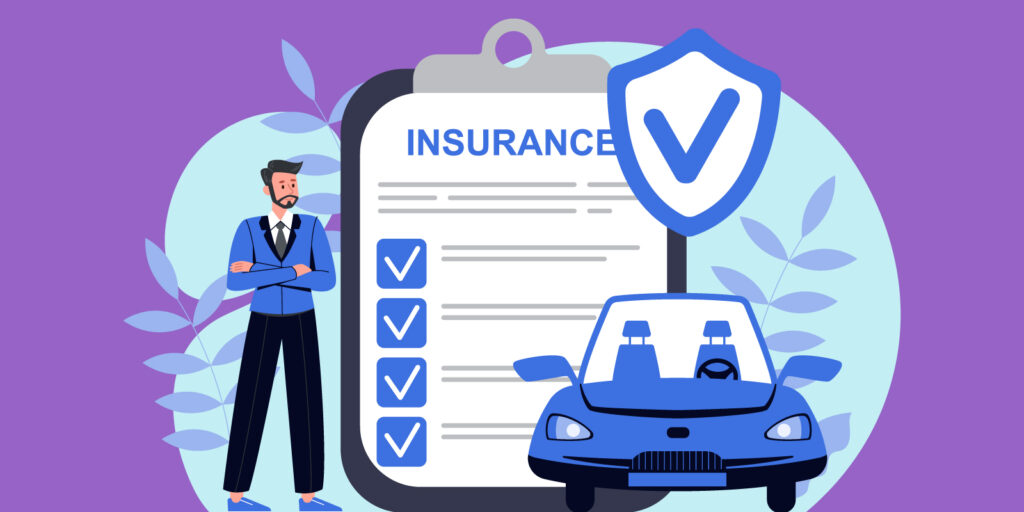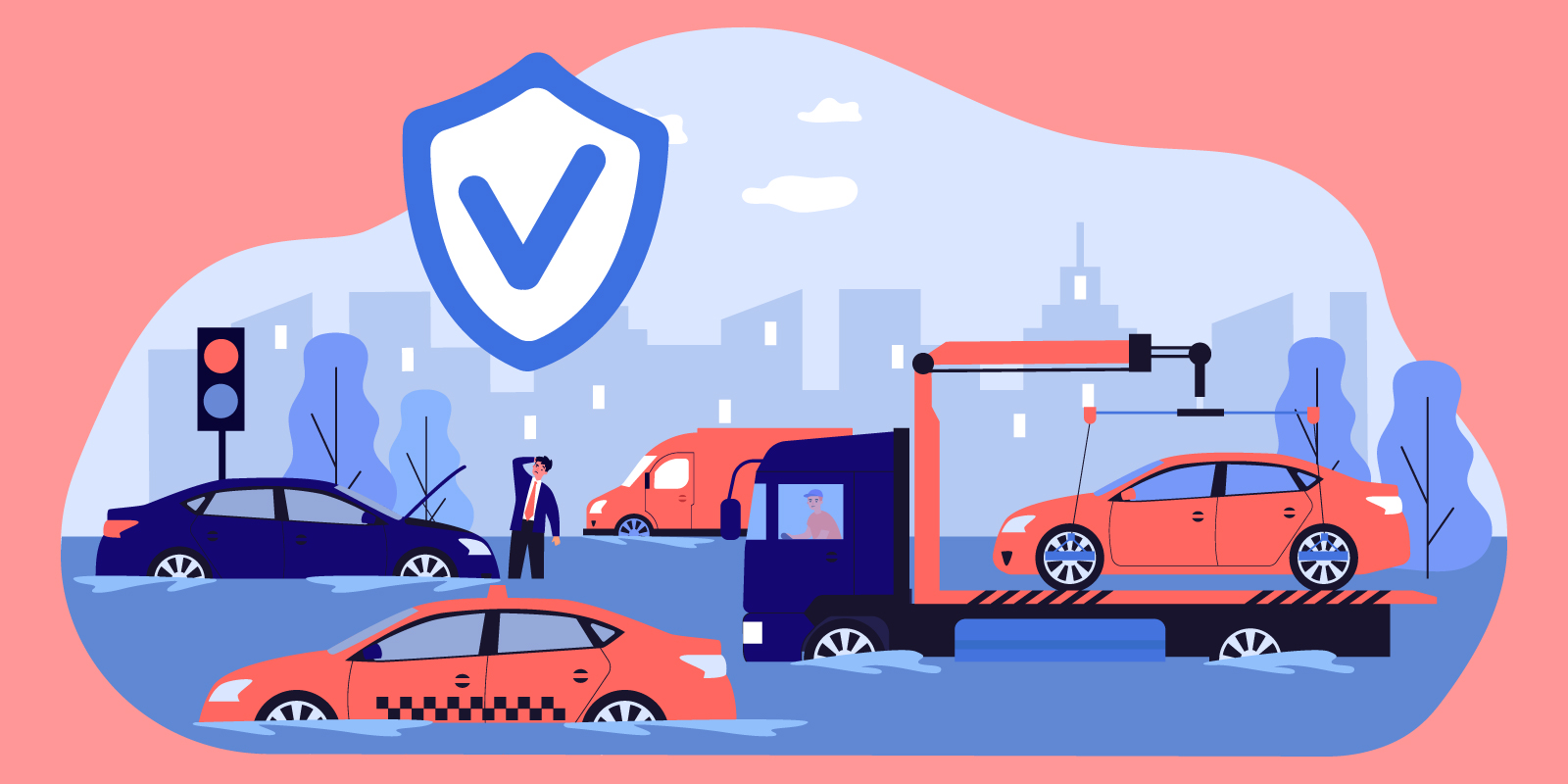Traffic collisions are common, but they’re not the only cause of vehicle damage. Natural disasters, vandalism and stubborn deer that refuse to get out of the road can cause broken windows, dented bumpers, deep scratches and more. Keep reading to find out how comprehensive insurance protects you against these threats.
What Is Comprehensive Insurance?
Liability insurance covers property damage and/or medical bills arising from an auto accident. It’s important to have, but since it only protects you in limited circumstances, you should consider adding comprehensive insurance to your auto policy. In most states, liability insurance is a requirement for drivers.
Comprehensive insurance, on the other hand, is an optional coverage that is added on for more protection. Comprehensive insurance covers damage caused by non-traffic accidents, such as earthquakes and falling trees. Pairing comprehensive coverage with liability coverage gives you way more protection, which may help limit your out-of-pocket expenses in the event your vehicle sustains significant damage.
What Does Comprehensive Insurance Cover?
Comprehensive insurance covers damage caused by inclement weather, natural disasters, explosions and vandalism. For example, if a tornado pulls a tree out of the ground and tosses it on top of your car, you’d use your comprehensive coverage to pay for the damage. Comprehensive policies also cover theft, fires, broken windows and damage that occurs when you hit a deer or other animal with your vehicle. Most commonly, however, comprehensive claims are made for windshields that get chipped or cracked from rocks in the road.
As you can see, this optional coverage protects you from a wide range of events, but none of those events are traffic-related. That’s what separates comprehensive coverage from liability coverage.
What Types of Damage Are Excluded?

Despite the “comprehensive” in the name, this type of auto insurance doesn’t cover everything. Here’s a sampling of what’s typically excluded:
- Pothole Damage: Large potholes are a menace to drivers everywhere. They can cause flat tires, bad alignment and other problems with your vehicle. Unfortunately, comprehensive insurance doesn’t cover vehicle damage caused by potholes.
- Wear and Tear: Your comprehensive policy is designed to pay for damage caused by unforeseen circumstances. It’s not for getting new brakes, replacing your wheel bearings or paying for other repairs related to normal wear and tear.
- Medical Payments to Other People: If you cause an accident that injures someone, your liability insurance should cover their medical bills. Comprehensive insurance won’t pay.
- Personal Belongings: Your comprehensive policy only pairs to repair or replace your vehicle after a non-traffic accident. It won’t pay to replace your iPad, prescription sunglasses or other items inside the vehicle when the accident occurs.
- Accident-Related Injuries: Just like your comprehensive policy won’t cover medical payments to other people, it won’t cover any injuries you sustain in a non-traffic accident. You’ll have to use your health insurance or some other type of coverage.
- Collision-Related Damage: Whether you have a dented bumper or a missing headlight, comprehensive insurance won’t pay for the damage if it occurred due to a traffic collision. That’s why you have liability insurance.
Filing a Claim
If your vehicle sustains damage in some type of covered event, you need to file a claim with your insurance company. Here’s what to do to reduce the amount of time it takes to get your money and fix the damage:
- Document the damage carefully. Walk around the vehicle and take photographs from several angles. Close-up shots don’t always show the extent of the damage, so make sure you take a few photos from a distance. If possible, document the conditions that contributed to the accident. For example, if the damage occurred due to a hurricane, take photos of uprooted trees and damaged roofs. These photos can help you prove that the damage occurred due to a covered event.
- Call your insurance agent. You’ll need to let your insurer know about the damage. If you have an agent, they will help start the claim process for you. If you don’t, you’ll likely have to call a 1-800 number and ask for the claims department. Either way, your insurance company will let you know what to expect and what to do next.
- An adjuster will assess your damage. Your insurance company will send out an adjuster to assess the damage and determine how much it’s likely to cost to make repairs. If the damage is severe, the adjuster may decide that it would be better to replace the vehicle instead of trying to repair it.
- Find a repair shop. Once you accept the adjuster’s estimate, you can start looking for a repair shop. While you have the right to choose a mechanic, it’s beneficial to use the shop recommended by the adjuster. If you do, your insurance company will guarantee the repair work, which can come in handy if you continue having problems with your vehicle after it’s fixed. Also, some insurance companies only pay the full repair bill for ones within their network, so be sure to ask your claim representative about that.
- Make Your Payment: When your mechanic finishes the repairs, you’ll have to pay your deductible before you can take the vehicle home. In insurance lingo, a deductible is the amount you have to pay out of pocket for a covered loss. If the repair bill is $3,000 and you have a $500 deductible, that means you’d pay $500, and your insurance company would cover the remaining $2,500.
A Note About Deductibles
When you renew your policy, think carefully about how much of a deductible you can afford. If you have a healthy bank balance, choosing a deductible of $1,500 or $2,000 can help you reduce your insurance premiums without putting yourself at risk. If your savings have been depleted, however, it’s better to choose a low deductible. Then you won’t have to come up with as much money to get your vehicle back from the repair shop.
Keep in mind that you can also set your comprehensive and collision deductibles at different amounts. Because collision accidents occur less frequently and cost significantly more, many people have a higher deductible than they would for a comprehensive claim. You might be surprised at how low you could get this deductible without ruining your budget; it’s not uncommon to carry a $0-100 deductible for comprehensive coverage.
Should You Buy Comprehensive Coverage?
If you are still making payments on your car, your lender will likely require full coverage, which includes comprehensive and collision insurance. If the car is a total loss, you’ll be able to use the money from your insurance company to pay off the loan.
While you might not have a high risk of hitting a deer on your morning commute or having a tree fall on your vehicle, most people experience a damaged windshield in some way or another. Comprehensive insurance will take care of your windshield (and all other non-collision-related damages) to keep you running smoothly.
As the value of your vehicle goes down, you might be able to save money by removing comprehensive coverage from your auto insurance policy. If you do that, however, make sure you have enough money in the bank to cover the cost of repairs.
You might also be interested in: Auto Liability Insurance Everything You Need To Know





